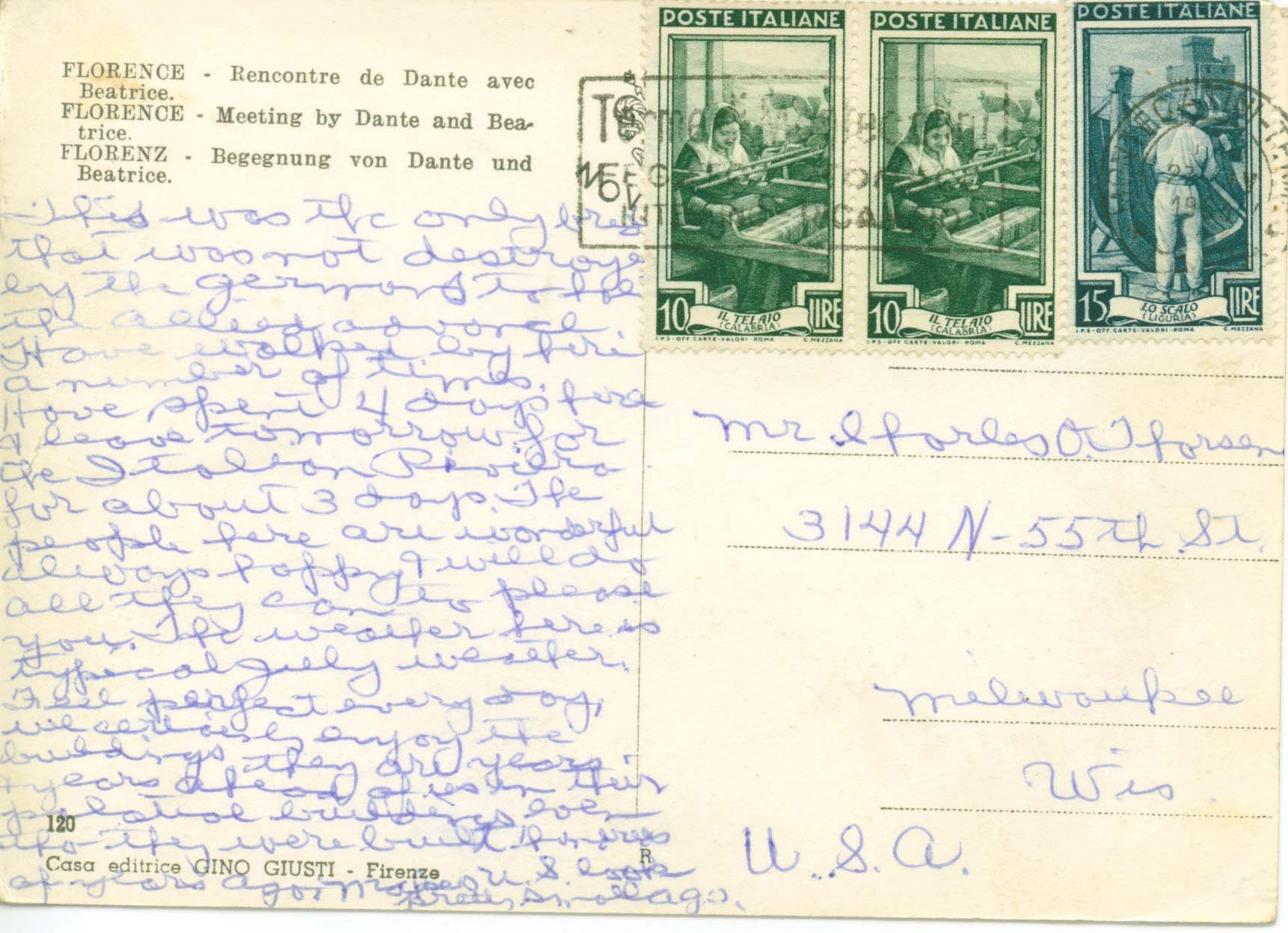Coordinates and text from Wikipedia, or Wikipedia
-----
Florence - From Wikipedia, the free encyclopedia
--
It has been the birthplace or chosen home of many notable historical figures, such as Dante, Boccaccio, Botticelli, Niccolò Machiavelli, Brunelleschi, Michelangelo, Donatello, Galileo Galilei, Catherine de' Medici, Antonio Meucci, Guccio Gucci, Salvatore Ferragamo, Roberto Cavalli, Florence Nightingale and Emilio Pucci.
The Santa Croce basilica, originally a Franciscan foundation, contains the monumental tombs of Galileo, Michelangelo, Machiavelli, Dante (actually a cenotaph), and many other notables.
In 1301, Dante was sent into exile from here (commemorated by a plaque on one of the walls of the Uffizi).
Badia Fiorentina - Famous as the parish church of Beatrice Portinari, the love of Dante's life, and the place where he watched her at mass, for Dante grew up across the street in what is now called the 'Casa di Dante', rebuilt in 1910 as a museum to Dante.
-----
Dante Alighieri - From Wikipedia, the free encyclopedia
--
Dante Alighieri (May/June c.1265 – September 14, 1321), commonly known as Dante, was an Italian poet of the Middle Ages. The name Dante is, according to the words of Jacopo Alighieri, a hypocorism for Durante. In contemporary documents it is followed by the patronymic Alagherii or de Alagheriis; it was Boccaccio who popularized the form Alighieri.
His Divine Comedy, originally called Commedia by the author and later nicknamed Divina by Boccaccio, is often considered the greatest literary work composed in the Italian language and a masterpiece of world literature.
In Italy he is known as "the Supreme Poet" (il Sommo Poeta) or just il Poeta. Dante, Petrarch and Boccaccio are also known as "the three fountains" or "the three crowns". Dante is also called the "Father of the Italian language". The first biography written on him was by Giovanni Boccaccio (1313-1375), who wrote the Trattatello in laude di Dante.
When Dante was 12, he was promised in marriage to Gemma di Manetto Donati, daughter of Messer Manetto Donati. Contracting marriages at this early age was quite common and involved a formal ceremony, including contracts signed before a notary. Dante had already fallen in love with another woman, Beatrice Portinari (known also as Bice). Years after his marriage to Gemma, he met Beatrice again. He had become interested in writing verse, and although he wrote several sonnets to Beatrice, he never mentioned his wife Gemma in any of his poems.
Dante had several children with Gemma. As often happens with significant figures, many people subsequently claimed to be Dante's offspring; however, it is likely that Jacopo, Pietro, Giovanni and Antonia were truly his children. Antonia became a nun with the name of Sister Beatrice.
When he was nine years old he met Beatrice Portinari, daughter of Folco Portinari, with whom he fell in love "at first sight", and apparently without even having spoken to her. He saw her frequently after age 18, often exchanging greetings in the street, but he never knew her well; he effectively set the example for the so-called "courtly love". It is hard now to understand what this love actually consisted of, but something extremely important was happening within Italian culture. It was in the name of this love that Dante gave his imprint to the "Dolce Stil Novo" (Sweet New Style) and would lead poets and writers to discover the themes of Love (Amore), which had never been so emphasized before. Love for Beatrice (as in a different manner Petrarch would show for his Laura) would apparently be the reason for poetry and for living, together with political passions. In many of his poems, she is depicted as semi-divine, watching over him constantly. When Beatrice died in 1290, Dante tried to find a refuge in Latin literature. The Convivio reveals that he had read Boethius's De consolatione philosophiae and Cicero's De amicitia. He then dedicated himself to philosophical studies at religious schools like the Dominican one in Santa Maria Novella.
-----
The image is "Dante and Beatrice", by Henry Holiday. Dante looks longingly at Beatrice (in center) passing by with friend Lady Vanna (red) along the Arno River. A 'color' print can be found here Wikipedia

--
Florence - Meeting by Dante and Beatrice
A personal message dated 1953 is written on the rear.
